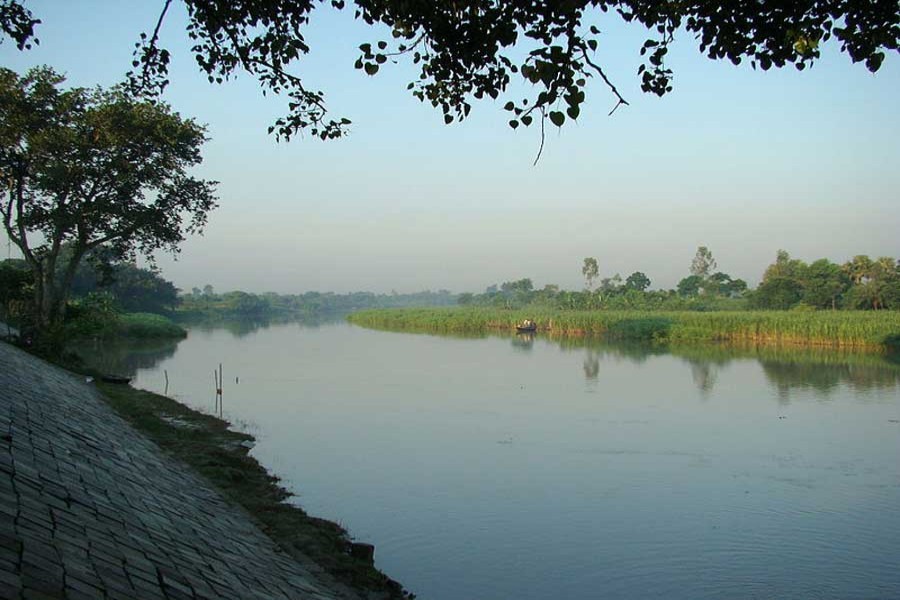Quite a few pictures of the river Buriganga carried in different newspapers over the past weeks paint a nightmarish sight of Dhaka City's lifeline. In one such picture, the colour of water is so jet-black that anyone can mistake it for tar in a large cauldron but for the boat that negotiates it defying the foul odour. In another representative picture, foamy crimson effluent from a factory is flowing into the river where it meets the black water to make a contrast of colours. Overall, it gives a look of a huge cesspool.
Clearly the hope that the Buriganga will get a respite from severe pollution with the departure of tanneries from Hazaribagh has foundered. It is not that the Buriganga alone is gasping for breath, other three rivers girdling the city have also embraced the same fate. Additionally, the fracas over the Central Effluent Treatment Plant (CETP) at the leather factories' shifted location in Savar has been doing to the Dhaleswari exactly what they did to the Buriganga. If these are more or less known, few are aware that the Chilai, the Labondah and the Bongshi also are in their death throes. Equally or even worse are the conditions of water bodies such as canals, water retaining low lands in flood plain areas around the city ---all of which are used as random dumping grounds of solid and liquid waste from households, factories and industries. In case of the Buriganga, residues from burnt-up fuel such as diesel and petrol are released into its waters from launches, cargoes and other vessels.
This is despite the fact that the High Court declared the Buriganga and by extension other rivers as the 'living entities'. Even a river commission was constituted which, as a first step, made a list of the rivers and also moved tentatively for a survey of the rivers still existent. The sad thing is that the river commission could hardly do anything more than making a number of recommendations for saving the rivers from extinctions. It is because the commission has not been empowered to take actions against land grabbers and encroachers on rivers. It also runs short of fund to advance any river protection programme.
At this point the Department of Environment certainly could play a more proactive role in collaboration with the river commission. In 2009, all the four rivers around the capital city---the Buriganga, the Sitalakhya, the Balu and the Turag---were declared as environmentally critical area ECA). This makes it incumbent on all to go by the Bangladesh Environment Conservation (Amendment) Act, 2010 which makes nine types of human activities illegal in any ECA. Since the ecosystem of an area has been found engendered, any human activity that may harm its biodiversity has been a violation of the Act. Thus from denudation of natural forest and trees to killing of wildlife to damage and destruction of habitats of flora and fauna to any activity that might change the quality of soil and water of the area concerned have been banned and made punishable offences.
Had the laws been enforced with a sense of purpose, the rivers that give Dhaka City its sustaining power would not have been in a coma. The eviction drive against illegal structures on the banks of these rivers raised the hope that it might be followed up by a comprehensive measure including stern actions against polluters. But no such follow-up was there and most likely the encroachers have by now started returning to occupy unclaimed spaces.
The fact is that if the rivers do not survive, Dhaka City will not survive notwithstanding the flyovers, metro rail, elevated expressway and underground railway system. What if after the massive investment, the city becomes uninhabitable and, at its extreme, has to be abandoned! That ominous prospect cannot be ruled out if the rivers are killed slowly and surely by default of decisive actions on the part of the authorities concerned.


